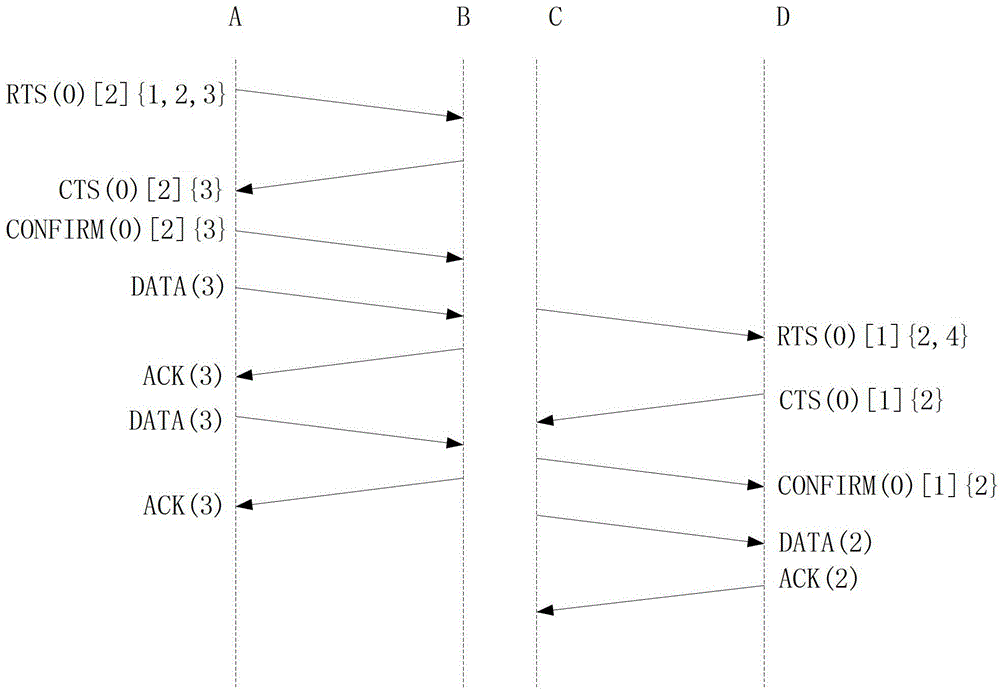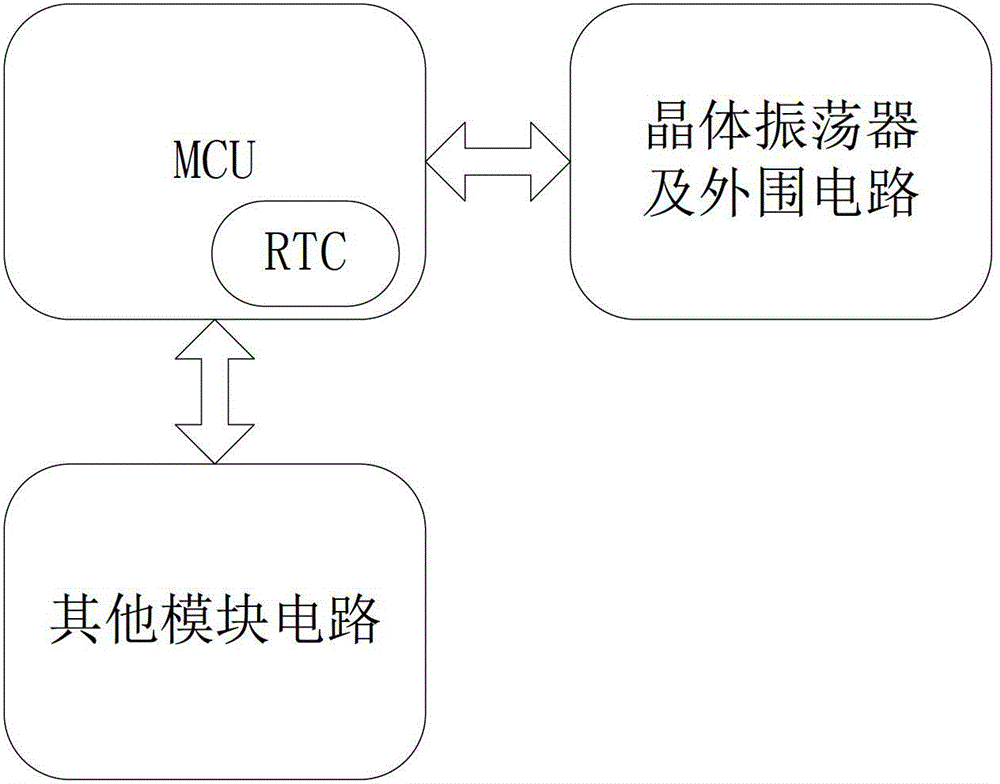Method for data energy conservation transmission between nodes in wireless sensor network
A wireless sensor, energy-saving transmission technology, applied in the direction of digital transmission system, transmission system, wireless communication, etc., can solve the problems of large energy consumption, conflicting data, and large data volume of nodes in the wireless sensor network, so as to reduce network delay and The average power consumption, the process of reducing data retransmission, and the effect of reducing transmission delay
- Summary
- Abstract
- Description
- Claims
- Application Information
AI Technical Summary
Problems solved by technology
Method used
Image
Examples
Embodiment
[0034] (1) Channel reservation and data sending process in this embodiment
[0035] In the first step, the source node sends an RTS packet on channel 0
[0036] RTS(0)[2]{1,2,3} indicates that the source node sends an RTS packet on channel 0, and the number of data packets attached to the RTS packet is 2, and the available idle channels are channels 1, 2 and 3. Since the control packets of all nodes are on channel 0, each node can crosstalk the CONFIRM packets of neighboring nodes to know which channels the neighboring nodes transmit data packets on, and the source node should send these channels when sending RTS packets. exclude.
[0037] In the second step, the destination node replies with a CTS packet
[0038] CTS(0)[2]{3} indicates that the destination node knows that it should receive 2 data packets continuously, and gives its own free channel as channel 3. Similarly, the destination node should also exclude the channel in the CONFIRM packet of the adjacent node that...
PUM
 Login to View More
Login to View More Abstract
Description
Claims
Application Information
 Login to View More
Login to View More - R&D
- Intellectual Property
- Life Sciences
- Materials
- Tech Scout
- Unparalleled Data Quality
- Higher Quality Content
- 60% Fewer Hallucinations
Browse by: Latest US Patents, China's latest patents, Technical Efficacy Thesaurus, Application Domain, Technology Topic, Popular Technical Reports.
© 2025 PatSnap. All rights reserved.Legal|Privacy policy|Modern Slavery Act Transparency Statement|Sitemap|About US| Contact US: help@patsnap.com



